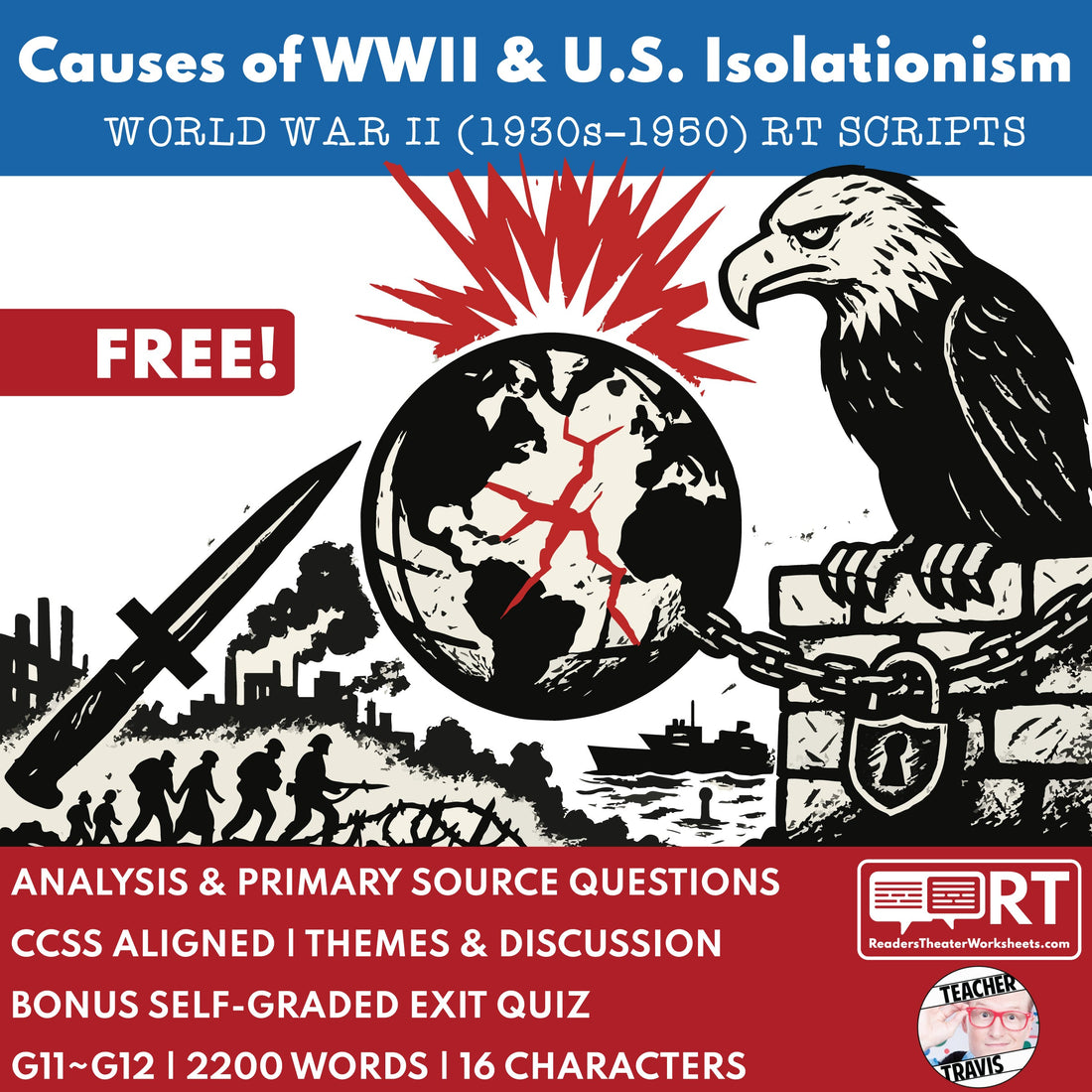
Interactive WWII Origins Lesson Plans for High School: From Isolationism to Pearl Harbor with Readers Theater Scripts (Grades 11-12)
Share
In this post, we'll explore how to integrate two powerful readers theater scripts into your curriculum: one on the Causes of WWII & Pre-War U.S. Readers Theater Script (available for free!) and another on the Pearl Harbor & U.S. Enters World War II Readers Theater Script. These resources, part of our comprehensive 8-script WWII bundle (now 40% off at $9.99), use authentic primary sources like FDR's Quarantine Speech and the Infamy Address to help students dissect themes like appeasement, isolationism vs. intervention, and the shift to war—perfect for AP U.S. History or standard curricula.
Why Readers Theater Excels for Teaching WWII Origins and U.S. Entry
Readers theater isn't just about reading lines; it's a proven method for developing oral reading fluency through scripted roles, as highlighted in educational strategies from sources like Reading Rockets. For WWII lessons, it allows students to embody historical figures—voicing isolationist arguments from Charles Lindbergh or Yamamoto's strategic planning—fostering empathy and deeper understanding of long tail concepts like "pre-war U.S. isolationism role-play activities" or "Pearl Harbor primary sources simulations for high school teachers." This interactive approach addresses diverse learning styles, from kinesthetic performers to analytical debaters, and aligns with CCSS standards for speaking, listening, and historical literacy (e.g., RH.11-12.1 for citing evidence).
Building a Sequential Unit: From Causes to Catalyst
Start with the free Causes script to set the stage: Students perform 10 scenes tracing Versailles reparations, Weimar hyperinflation, the Munich Agreement's appeasement failures, and U.S. policies like the Neutrality Acts and Lend-Lease. Follow up with the Pearl Harbor script, where roles shift to the 1941 attack, congressional declarations, and home-front responses. Combine them for a "build-up to war" simulation: Have groups rehearse isolationist debates from the first script, then pivot to "what if" scenarios post-Pearl Harbor, using primary excerpts to argue intervention's inevitability.
Practical Teaching Tips for Differentiation and Engagement
- Virtual Adaptations: Use Zoom breakout rooms for small-group rehearsals, recording performances for peer feedback—ideal for hybrid classrooms searching "WWII entry into war fluency building exercises online."
- Cross-Curricular Ties: Pair with ELA for rhetoric analysis of FDR's Infamy Speech (ethos/pathos/logos) or math for timeline graphing of 1930s events.
- Assessment Ideas: Beyond the included self-grading quizzes and worksheets (25 Google Slides with vocabulary, analysis prompts, and extensions), try student-led podcasts debating "Did appeasement delay or hasten war?" using script evidence.
Each script package includes an editable ~9-page script (10 scenes, ~15 characters), a 10-page teacher guide with context and questions, student worksheets, and a 20-question Google Forms quiz—all in a single PDF with Google links for easy printing or digital use.
Real-World Connections to Boost Student Relevance
Link these lessons to modern geopolitics: Discuss how U.S. isolationism echoes in current neutrality debates, or how Pearl Harbor's surprise parallels cyber threats today. This not only captures searches like "high school history curriculum with primary documents on WWII origins" but also builds critical thinking for college-bound teens.
Ready to energize your WWII unit? Download the free Causes of WWII script today, grab the Pearl Harbor script, or save big with the full WWII bundle covering the entire era.
